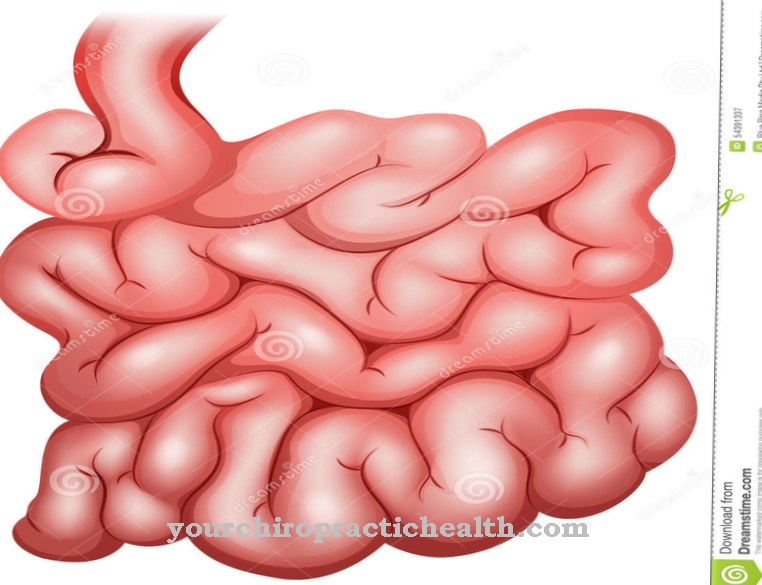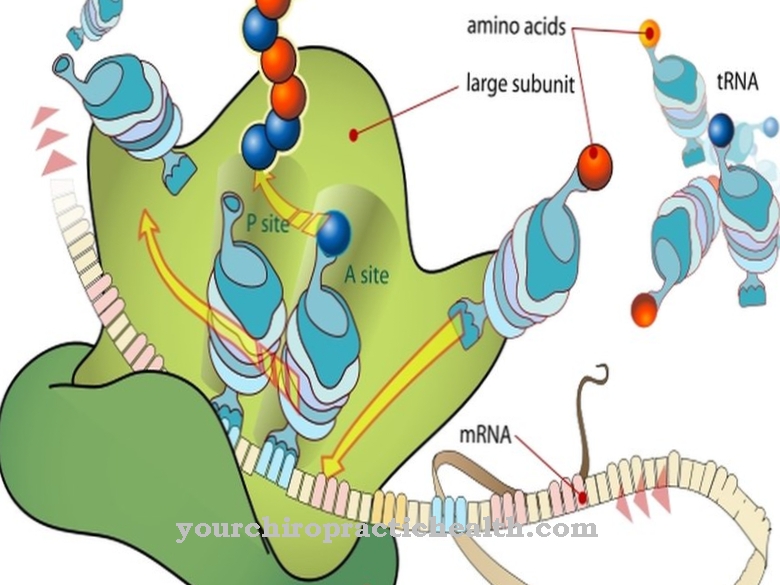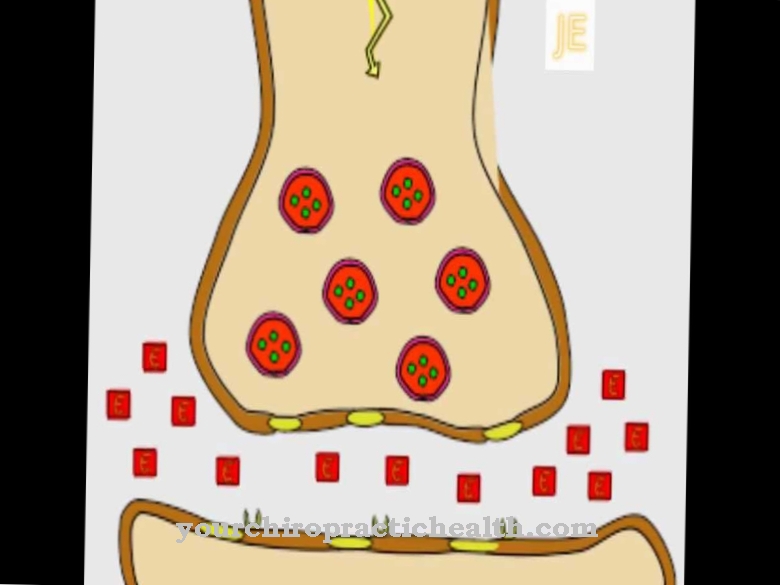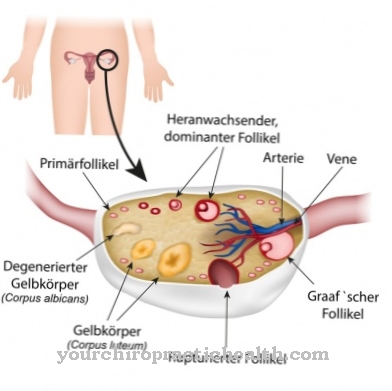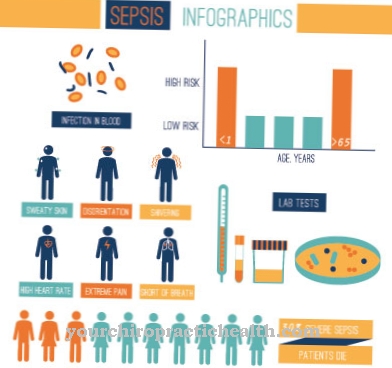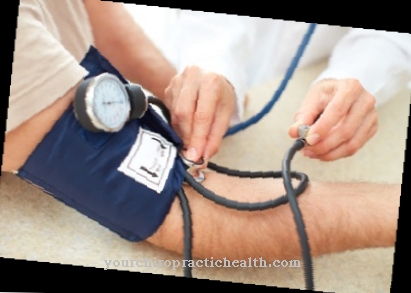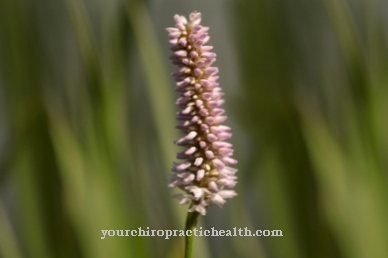The Elephantiasis is an abnormal enlargement of a part of the body caused by lymphatic congestion. Most often the legs or external genitals are affected. The disease is either caused by a worm infection or is congenital.
What is elephantiasis?

© Kateryna_Kon - stock.adobe.com
Elephantiasis is a collective term for diseases that are based on a disruption of the lymphatic drainage. You can take the term elephantiasis literally if you want to imagine what elephantiasis looks like. Those affected really make an elephant-like impression.
Elephantiasis in particular affects arms and legs. A sometimes gigantic soft swelling occurs, which can still be depressed at the beginning of the elephantiasis. Over the years, the swelling will harden. Then the disease cannot be reversed.
causes
Around every fifth elephantiasis patient has a congenital weakness of the lymphatic vessels. In healthy people, the lymph vessels transport the body fluid that has left the blood vessels back to the heart like a drainage system. If, on the other hand, the lymph vessels are defective and impermeable, body fluid builds up and the affected part of the body swells.
Congenital elephantiasis by no means always occurs at birth. It can even appear after the age of 35. In most cases of elephantiasis, another disease leads to an occlusion of the lymphatic vessels.
As a rule, these are persistent and protracted infectious diseases such as erysipelas, herpes simplex on the lips, leprosy and so-called filariasis, a tropical disease. In some cases, a cancerous growth is responsible for the destruction of the lymphatic vessels. Lymph vessels can also be damaged by surgery.
The Elephantiosis tropica or lymphatic filariasis common in the tropics. The worms settle in the lymph vessels and lymph nodes of humans. Female worms lay hundreds of eggs. Insects ingest the larvae that develop from the eggs during a blood meal. The larvae are transmitted to another person through the sting canal.
You can find your medication here
➔ Medicines against swelling of the lymph nodesSymptoms, ailments & signs
The first symptoms are usually reddening and swelling of the skin around the arms and legs. Inflammatory allergic reactions are triggered by the worms growing in the lymphatic systems. Associated with bouts of fever, arms, legs, testicles and female breasts swell when they are generally unwell.
The infections mentioned must definitely heal. If there is swelling on the arms and legs, but also on other parts of the body, an examination is definitely necessary. Since many very different underlying diseases can lead to elephantiasis, the diagnosis begins with a detailed physical examination and examination of the medical history. This usually results in a suspicion that the doctor can then investigate in a targeted manner.
If swelling occurs on your arms and legs after a trip to the tropics, it is imperative that you make your doctor aware of your trip. This can be an important point for finding a diagnosis. Edema on the legs is usually caused by heart disease or venous disease. This symptom does not count as elephantiasis.
course
If the underlying disease can be treated in time, the chances are good that the elephantiasis will go away again. If the swelling persists or if the cause cannot be eliminated, treatment may be required for life. Elephantiasis in itself is an unpleasant, but in most cases otherwise harmless disease.
When should you go to the doctor?
If redness, itching, and swelling of the skin is noticed in the arms and legs, a doctor should be consulted. At the latest, when further symptoms of elephantiasis appear, this requires immediate clarification. For example, if you experience unusual attacks of fever and general malaise that cannot be traced back to any other cause, you must definitely discuss this with your doctor. This is especially true if the symptoms arise after a trip to the tropics or after having overcome cancer.
While the condition itself is not life threatening, the complications can lead to serious health problems. For this reason alone, you should speak to a doctor quickly if you suspect elephantiasis. If the symptoms mentioned occur in connection with another infectious disease, it is best to consult your doctor. The same applies if edema is noticed on the legs. These can appear as a side effect and indicate that the elephantiasis is already more advanced - an immediate doctor's visit is advisable.
Doctors & therapists in your area
Complications
Elephantiasis (lymphatic congestion) cannot be treated curatively. The backflow of the lymphatic fluids and the associated swelling can be controlled by suitable therapeutic measures. If the elephantiasis was triggered by filariae and worm larvae, the doctor first tries to kill the pathogens by administering various drugs or to keep the pathogen load as low as possible.
Complications can then be seen in the side effects of the respective drugs. The swellings on the extremities caused by elephantiasis can only be treated by consistently wearing compression stockings and frequently using lymphatic drainage. If neither is done, the swelling will be so massive that the patient will be severely restricted in his daily life.
Massive swelling on the legs can lead to loss of mobility. The treatment of elephantiasis is very time-consuming for the patient and, despite the considerable effort, not always successful. In addition, wearing compression stockings and bandages does not meet the fashion requirements of today.
As a result, many patients not only suffer from elephantiasis itself, but also from its treatment. Since not all services are covered by health insurances, patients are often faced with financial problems.
Treatment & Therapy
Of course, any underlying disease that may have been present for months and years must first be treated effectively. Swelling in the arms and legs can be relieved with custom-made compression stockings.
In addition, lymph drainage (a special massage technique) and decongestant medication have a soothing effect. In recent years, microsurgical transplants of lymphatic vessels have also been carried out with increasing success.
Filaria and larvae can be killed with medication. Adequate hygiene and disinfection are essential to prevent bacterial colonization of the wounds. Pressure bandages can also reduce swelling. A real cure or therapy is not possible with elephantiasis.
Outlook & forecast
There is no cure for elephantiasis. However, since it is not a uniform disease, there is also no uniform course. In many people, however, the symptoms can be treated in such a way that the swelling recedes. Therapy usually consists of the use of manual lymphatic drainage. With the help of lymphatic drainage, the patient can lead a normal life in most cases. If the therapy is discontinued, however, the lymph will immediately build up again and the limbs or genitals will again swell enormously.
The treated patients suffer from overstretched skin, which can only be corrected by plastic surgery. However, a complete reconstruction of the skin structure is not possible. In severe cases of elephantiasis, manual lymphatic drainage no longer helps. Then an amputation of the affected limb may be necessary.
The further prognosis depends on the underlying disease. Successful symptomatic therapy of elephantiasis can only be successful if the underlying disease is also successfully treated. This is especially true in the case of infections that lead to elephantiasis or genetic causes of lymph congestion.
Types of elephantiasis caused by tumors have a worse prognosis. Successful lymph drainage is not possible here, and surgical removal of the tumors in elephantiasis only increases the spread of the cancer throughout the body. With a lot of luck, only an amputation of the affected limbs can save lives.
You can find your medication here
➔ Medicines against swelling of the lymph nodesprevention
Effective prevention of elephantiasis tropica includes the following measures: killing mosquitoes by spraying and giving antibiotics to prevent infections. In addition, the microfilariae circulating in the blood must be killed by drug treatment; swelling can be reduced with the help of (4) pressure bandages. In borderline cases, only surgical removal of the infected tissue helps.
Compression stockings can only work with congenital elephantiasis if they are actually worn. Often there are cosmetic reasons why the stockings are in the closet. But this is short-sighted. If the swelling is not treated in time, hardening can occur, which can then no longer be treated. If you have elephantiasis, you should put your legs up as often as possible.
Aftercare
Immediate treatment by a doctor is always necessary for elephantiasis. Since this disease cannot heal itself, a doctor should always be consulted very early on when the first signs appear. As a rule, patients with elephantiasis do not have any special measures or options for follow-up care.
Therefore, early detection with further treatment is always in the foreground of this disease. The treatment itself is usually done with the help of compression stockings. Parents should ensure that these stockings are worn regularly and correctly, especially with children, so that there are no further complications. In some cases, however, surgical interventions are also necessary.
In this case, strict bed rest is to be kept afterwards. The person concerned must not exert himself unnecessarily and also not carry out any sporting or stressful activities. A complete cure of elephantiasis is not always possible. Care by your own family or friends can also have a positive effect on the course of the disease. Contact with other elephantiasis patients is not uncommon.
You can do that yourself
It is important to treat the edema regularly, especially in everyday life, in order to avoid pain and secondary diseases. Above all, this includes sensible exercise. Sports such as aqua aerobics, i.e. aqua jogging, aqua cycling or aqua aerobics, support the lymphs in draining away the fluids. Courses are regularly offered in swimming pools or therapy facilities. In some cases, health insurance companies also cover the costs.
The water exerts a pressure on the body that decreases upwards. In this way, the lymphs can be supported during transport. In addition, the joints are relieved and calories are burned, which leads to a gentle weight loss and thus also increases freedom of movement. However, those affected must train at least twice a week in order to achieve meaningful results. Compression clothing is worn for this. The combination of movement and pressure allows the tissue fluid to drain better and venous blood to be transported out of the legs.
Skin care is also important with elephantiasis. Because the skin barrier is no longer functional due to the constant swelling. This allows bacteria and viruses to penetrate faster and cause infections. To avoid this, perfumed products should be avoided. Natural, mild lotions and creams with oils and aloe vera are good for the area of edema. Regular care prevents infections. Dry skin can be cared for with urea, lactic acid and sorbitol. Products with mineral oils should be avoided.

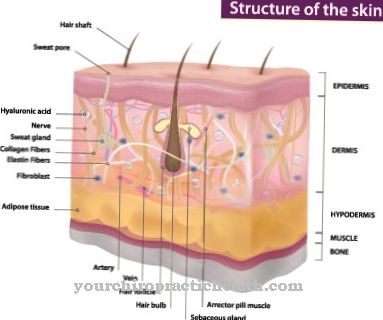
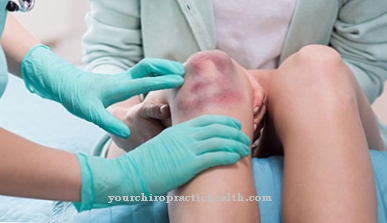



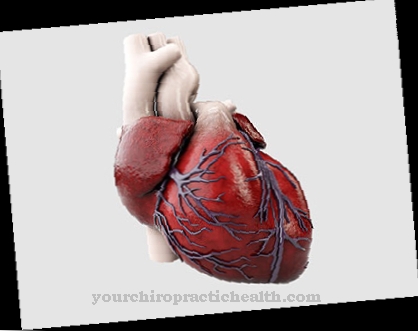

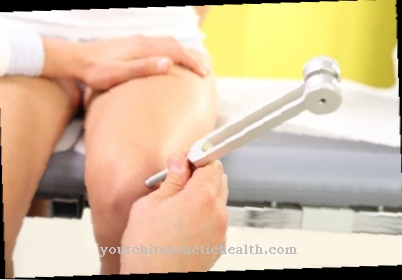


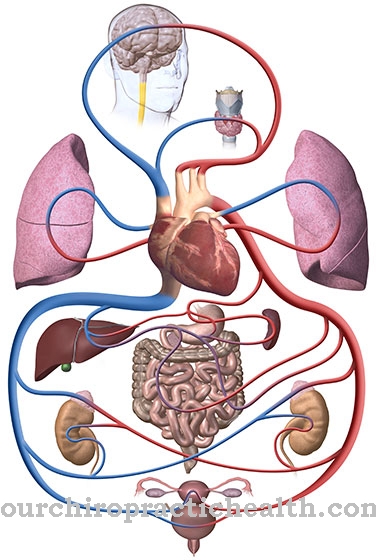

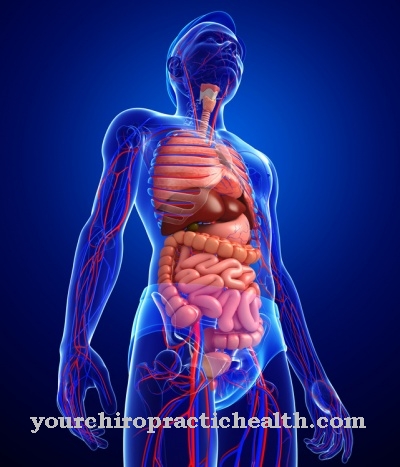
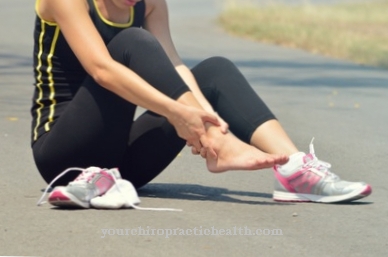
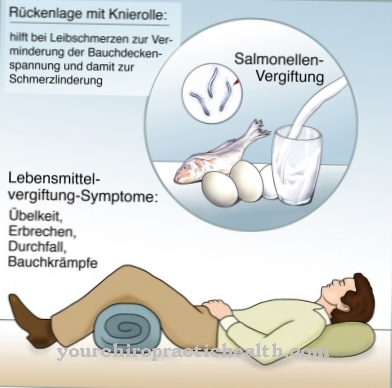

.jpg)

